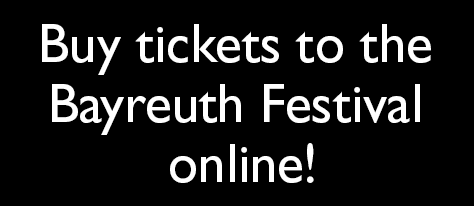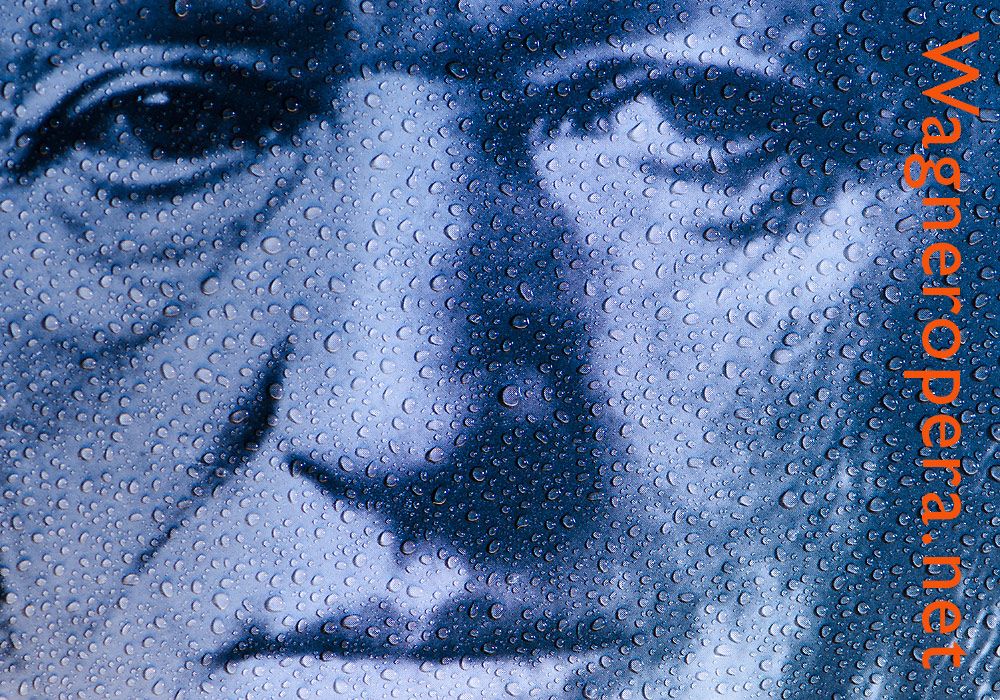Der fliegende Holländer (The Flying Dutchman)
The first performance of Der fliegende Holländer was held in Königlich Sächsisches Hoftheater on 2 January 1843. The world premiere was conducted by Richard Wagner. The first production of Der fliegende Holländer at the Bayreuth Festival was in 1901.

The puppets used
in the first Bayreuth production. (Photo/artwork: Per-Erik Skramstad)
Wagner wrote the libretto for Der fliegende Holländer between May 18 and 28, 1841. Six months later, he finished composing the music, but he had to wait another year before the premiere took place in Dresden on January 2, 1843.
Following the successful premiere of Der fliegende Holländer, Richard Wagner is offered, and accepts, the post of Kapellmeister to the royal Saxon court in Dresden. He completes the poem of Tannhäuser in April and in the summer begins work on the music. In July he conducts his Das Liebesmahl der Apostel (The Love-Feast of the Apostles), featuring a vast chorus of 1,200 amateur singers and an orchestra of 100 gathered in Dresden’s Frauenkirche, in whose galleries the singers are arranged.
Synopsis
Daland, a Norwegian merchant, is caught in a storm, and seeks refuge. He meets a mysterious figure, pale and dressed in black, later to be revealed as the flying Dutchman. The Dutchman laments his cursed fate ("Die Frist ist um"). Condemned to roam the seas forever after invoking Satan, the Dutchman can only be freed if he finds a woman who will be faithful (Treu) to him until death. Every seven years, he is allowed to come ashore in search of such a woman.
The Dutchman asks for his Daland's daughter Senta’s hand in marriage, offering treasure as a dowry. Tempted by the riches, Daland agrees, and both ships sail for Daland’s home. At Daland's house, the maidens are spinning wool and singing. Senta is captivated by a portrait of the Dutchman that hangs on the wall, and sings the ballad "about the Dutchman's misery, culminating with her decision to save him.
Senta’s former lover, a jelous stalker called Erik, arrives and overhears her declaration ("Senta, willst du mich verderben?"). When Daland and the Dutchman arrive, the Dutchman is presented to Senta, and they sing the famous duet (which is actually a parallell monologue), in which the Dutchman states that the sensation he feels inside him is not love, but his longing for redemption (Erlösung).
Later that evening, the local people invite the ghostly crew to celebrate, but the eerie silence from the Dutchman’s ship frightens everyone. Erik confronts Senta, reminding her of their alleged past love, but the Dutchman overhears and believes he is now forever cursed. He reveals his identity as the Flying Dutchman and prepares to leave. Senta throws herself into the sea. Her sacrifice breaks the curse, and the Dutchman is saved. The ghost ship vanishes, and Senta and the Dutchman ascend to heaven together.
The Flying Dutchman Timeline
1840
Wagner submitted a synopsis of the Dutchman story in French to the Paris Opera management in the summer. The management gave it to the house composer Pierre Louise Philippe Dietsch. The opera Vaisseau Phantôme had 11 performances.
1841
The original 1841 version (written between 18 and 28 May 1841) was set in Scotland and designed as one act with three scenes.
1843
The 2 January 1843 (first performance in Dresden) version that moved the setting to Norway and divided the opera into a more traditional three acts. One month later, Wagner was appointed to the post of Kapellmeister by the Saxon royal court. Wagner conducted the premiere.
1844
The first published edition in 1844 (almost identical to the 1843 performance version)
1846
The 1846 performance that made instrumentation changes
1852
The 1852 Zurich performance with additional instrumentation changes and consolidation with 1846 changes that highlighted the theme of music associated with Senta (and redemption).
1853
The Weimar performance in 1853 with one chord change
1860
The 1860 version with overture (coda), and end-of-the-opera changes that included additional measures of the Senta theme in the ending
1864
The Munich 1864 version that added a wind machine
1871
Wagner's libretto version that he printed in 1871
1880
The Munich 1880 performance that made changes to the trombone part.
1897
Felix Weingartner publishes a version that was authorized by Cosima. This version was widely used, but has later been criticized.
1901
The first production of Der fliegende Holländer at the Bayreuth Festival. Cosima authorized Felix Weingartner’s edition
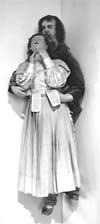
The redemption puppets used at the end of Bayreuth's 1901 production.
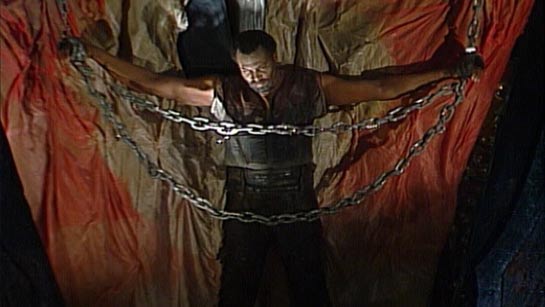
Simon Estes in the ground breaking production by Harry Kupfer in Bayreuth (1978-85). This production was filmed in 1985 and is available on DVD.
Productions of Der fliegende Holländer the first years
| 1843 | Dresden Riga Kassel |
| 1844 | Berlin (well received by the public, but not revived before 1868) |
| 1852 | Zürich (conducted by Wagner) |
| 1853 | Weimar (Franz Liszt) |
| [...] | |
| 1901 | Bayreuth: First production (see poster below) |
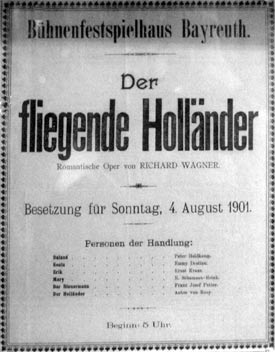
Said about Der fliegende Holländer
Richard Wagner
The figure of the "Flying Dutchman" is a mythical creation of the Folk: a primal trait of human nature speaks out from it with heart-enthralling force. This trait, in its most universal meaning, is the longing after rest from amid the storms of life.
Richard Wagner in "A Communication to my Friends
Calixto Bieito
My interpretation of the Dutchman is very simple: It is the story of the Western European man today, who is losing his job in this kind of economic system we have today. He is depressive, thinking about where he can find loyalty, fidelity, solidarity - where he can find something true.
Calixto Bieito
Reviews of The Flying Dutchman
→ Sam Goodyear on Dmitri Tcherniakov’s production of Der fliegende Holländer, Bayreuth Festival 2023
→ Bayreuth 2015: Erling E. Guldbrandsen: The Flying Dutchman (Gloger)
→ Bayreuth 2012: Mark Berry: The Flying Dutchman (Gloger)
→ Royal Opera House 2011: Mark Berry on Tim Albery's Dutchman
→ Jerry Floyd on Haenchen/Kušej: Der fliegende Holländer
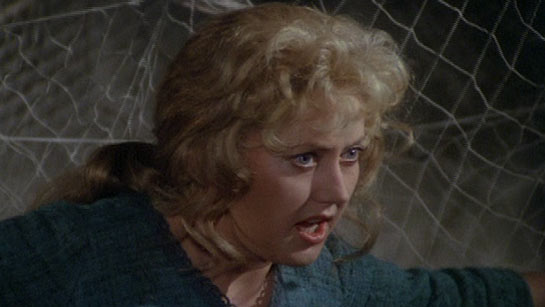
Catarina Ligendza as Senta in Der fliegende Holländer (film version from 1974, available on DVD).
Key Characters
The Dutchman: The titular character, a mysterious and tormented figure
Senta: A young woman who is obsessed with the Flying Dutchman, and decides to redeem him through her loyalty
Daland: Senta's father, a Norwegian sea captain
Musical Highlights
The Dutchman's monologue (Die Frist is um), which sets the tone for his character
Senta's ballad, a pivotal moment in the opera that introduces her character and her fascination with the Dutchman
The sailors' choruses, which add a lively contrast to the more somber themes
Themes
Redemption through loyalty
Death wish - longing for death
Obsession and fate
The supernatural in conflict with the mundane world
Der fliegende Holländer in different languages
German title
Der fliegende Holländer
English title
The Flying Dutchman
French title
La Vaisseau Fantôme
Spanish title
El holandés errante
Polish title
Latający Holender
Hungarian title
A bolygó hollandi
Dutch title
De Vliegende Hollander
Danish title
Den flyvende hollænder
Swedish title
Den flygande holländaren
Norwegian title
Den flyvende hollender
Finnish title
Lentävä hollantilainen
Wagner operas in other languages


